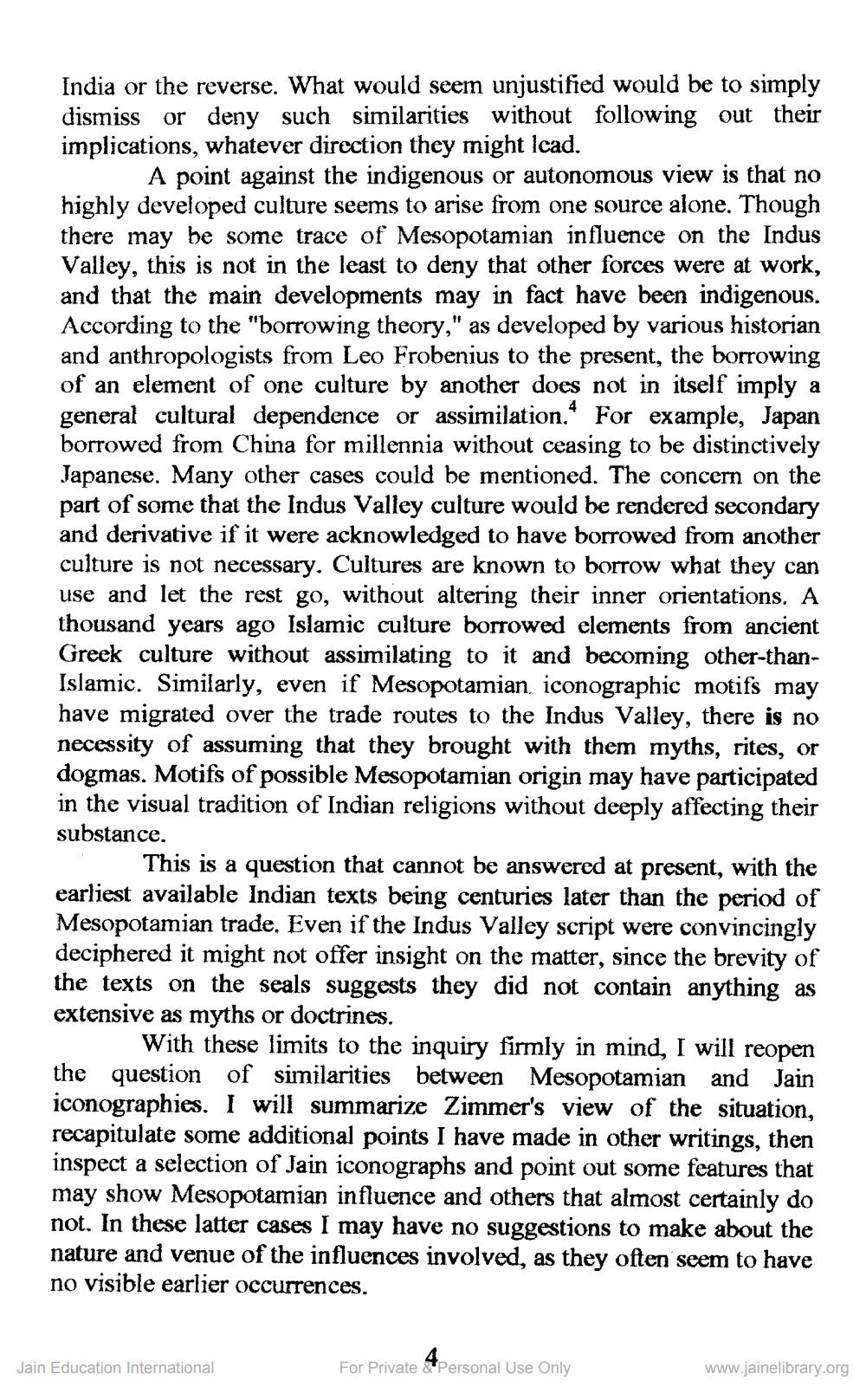Book Title: Jinamanjari 2002 04 No 25 Author(s): Jinamanjari Publisher: Canada Bramhi Jain Society Publication View full book textPage 8
________________ India or the reverse. What would seem unjustified would be to simply dismiss or deny such similarities without following out their implications, whatever direction they might lcad. A point against the indigenous or autonomous view is that no highly developed culture seems to arise from one source alone. Though there may be some trace of Mesopotamian influence on the Indus Valley, this is not in the least to deny that other forces were at work, and that the main developments may in fact have been indigenous. According to the "borrowing theory," as developed by various historian and anthropologists from Leo Frobenius to the present, the borrowing of an element of one culture by another does not in itself imply a general cultural dependence or assimilation. For example, Japan borrowed from China for millennia without ceasing to be distinctively Japanese. Many other cases could be mentioned. The concern on the part of some that the Indus Valley culture would be rendered secondary and derivative if it were acknowledged to have borrowed from another culture is not necessary. Cultures are known to borrow what they can use and let the rest go, without altering their inner orientations. A thousand years ago Islamic culture borrowed elements from ancient Greek culture without assimilating to it and becoming other-thanIslamic. Similarly, even if Mesopotamian, iconographic motifs may have migrated over the trade routes to the Indus Valley, there is no necessity of assuming that they brought with them myths, rites, or dogmas. Motifs of possible Mesopotamian origin may have participated in the visual tradition of Indian religions without deeply affecting their substance. This is a question that cannot be answered at present, with the earliest available Indian texts being centuries later than the period of Mesopotamian trade. Even if the Indus Valley script were convincingly deciphered it might not offer insight on the matter, since the brevity of the texts on the seals suggests they did not contain anything as extensive as myths or doctrines. With these limits to the inquiry firmly in mind, I will reopen the question of similarities between Mesopotamian and Jain iconographies. I will summarize Zimmer's view of the situation, recapitulate some additional points I have made in other writings, then inspect a selection of Jain iconographs and point out some features that may show Mesopotamian influence and others that almost certainly do not. In these latter cases I may have no suggestions to make about the nature and venue of the influences involved, as they often seem to have no visible earlier occurrences. Jain Education International For Private Personal Use Only www.jainelibrary.orgPage Navigation
1 ... 6 7 8 9 10 11 12 13 14 15 16 17 18 19 20 21 22 23 24 25 26 27 28 29 30 31 32 33 34 35 36 37 38 39 40 41 42 43 44 45 46 47 48 49 50 51 52 53 54 55 56 57 58 59 60 61 62 63 64 65 66 67 68 69 70 71 72 73 74 75 76
